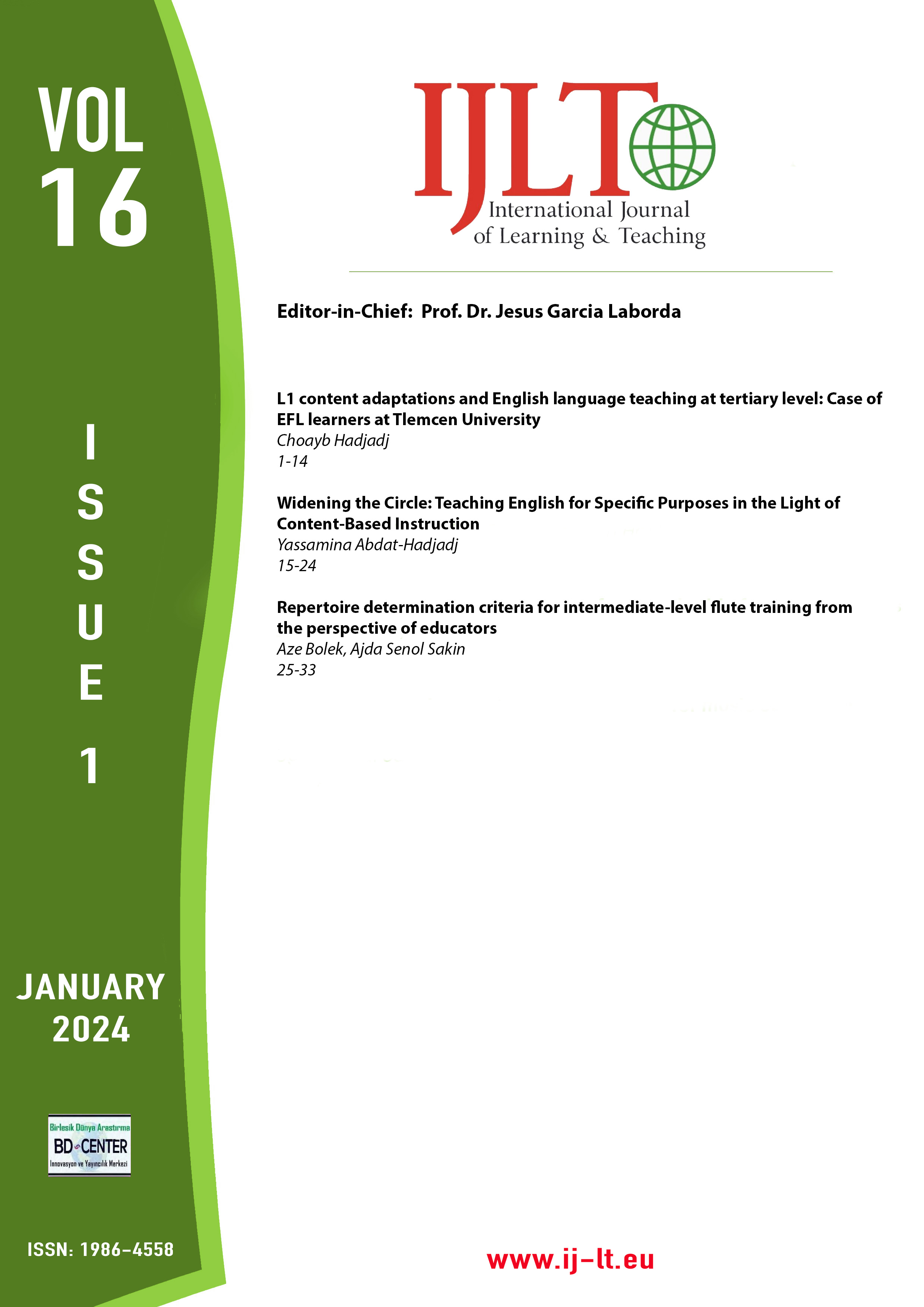Widening the Circle: Teaching English for Specific Purposes in the Light of Content-Based Instruction
Main Article Content
Abstract
Language instruction based on content is not a new idea; it originated in English-speaking countries such as the USA, Canada, and many European countries that study content subjects in English. Accordingly, it has become a widely adopted pedagogical approach to English for Academic Purposes. The teaching of English to speakers of other languages, including Algeria, however, abounds with multiple acronyms, causing teachers to become confused, and even disoriented when considering English for Specific Purposes, English for Academic Purposes, and Content-Based Instruction. The rationale of this purely theoretical-based article is to understand the current pedagogical practices in language across the curriculum and strive to unearth and uncover how English for Specific Purpose courses can be taught by implementing Content-based Instruction as a syllabus, by reviewing some linguistic, and pedagogical rationales as well as principles for the application of this framework for foreign language learners in higher education, more precisely in the ESP context. Besides, the study suggests some teaching models that are meant to help English language instructors to be content teachers in some circumstances and language-competent teachers in other contexts.
Keywords: Content-Based Instruction; teacher; Teaching English to Speakers of Other Languages.
Downloads
Article Details

This work is licensed under a Creative Commons Attribution-NonCommercial-NoDerivatives 4.0 International License.
Authors who publish with this journal agree to the following terms:
- Authors retain copyright and grant the journal right of first publication with the work simultaneously licensed under a Creative Commons Attribution License that allows others to share the work with an acknowledgement of the work's authorship and initial publication in this journal.
- Authors are able to enter into separate, additional contractual arrangements for the non-exclusive distribution of the journal's published version of the work (e.g., post it to an institutional repository or publish it in a book), with an acknowledgement of its initial publication in this journal.
- Authors are permitted and encouraged to post their work online (e.g., in institutional repositories or on their website) prior to and during the submission process, as it can lead to productive exchanges, as well as earlier and greater citation of published work (SeeThe Effect of Open Access).
